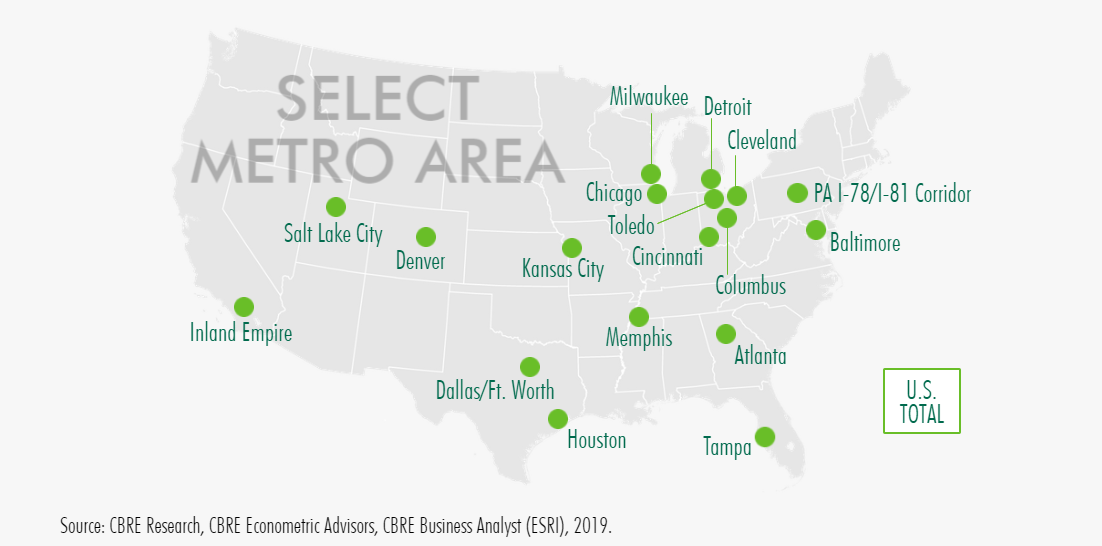

Click the map to go to the interactive feature.
Retail real estate left behind by the retail industry’s evolution can find new life as warehouses and e-commerce distribution centers, as shown by a new report from CBRE detailing 24 such conversion projects across the U.S.
CBRE found various types of retail-to-warehouse conversions, including demolition of obsolete malls to be rebuilt as warehouses in Baltimore, Atlanta, Chicago, Detroit and several markets in Ohio. Other retail structures were left standing and repurposed for industrial uses, including a former Toys ‘R’ Us in Milwaukee now occupied by a business that remanufactures transmissions, and conversions of several Sam’s Club stores to distribution centers.
The conversion trend, while growing, remains a niche in the industrial-and-logistics real estate market. Still, it draws momentum from ongoing factors in each industry: Demand for warehouse space is so strong that vacancies are at or near historic lows in many markets. Meanwhile, though the broader retail market is healthy, closures by national big-box retailers and department stores have created opportunities in many cases for nonretail uses to move in.
“In nearly every market in the U.S., there are sites where this kind of repurposing could work, at least on paper,” said David Egan, CBRE’s Global Head of Industrial & Logistics Research. “But many conversions are more challenging to execute than it might seem, given that the developer-owner of each site often needs to get a wide group of stakeholders to agree on a fairly dramatic change.”
Location An Advantage
Factors favoring retail space for conversion include the prime location of many retail centers, which often sit at busy intersections or highway interchanges. Another advantage: Site access. Standalone big-box stores, in particular, offer backend docks and easy access for trucks. They also have the high ceilings needed for distribution uses.
Finally, some retail spaces simply are available, which isn’t always the case for industrial properties in many markets. Most of the conversion projects analyzed by CBRE are in markets with vacancy of less than 5 percent for industrial-and-logistics real estate.
Gaining Consensus A Challenge
The primary impediment to conversions is that retail centers are designated for retail uses, by economics and by covenant. Many centers are encumbered by mortgages predicated on retail lease rates rather than traditionally lower industrial lease rates. Any landlord looking to convert their center also would need the approval of their lenders, city officials, neighbors and, in many cases, the center’s other retailers. Some mightn’t appreciate the increased truck traffic and decreased shopper traffic.
“These types of conversions were once unthinkable, and now they’re not only happening, they’re gaining traction,” said Adam Mullen, Americas Leader of CBRE’s Industrial & Logistics business. “That industrial uses can overtake what are usually higher-rent uses illustrates the strength of demand for industrial real estate, especially last-mile distribution centers.”
Click here to access the report and an interactive map of the 24 conversion projects.
